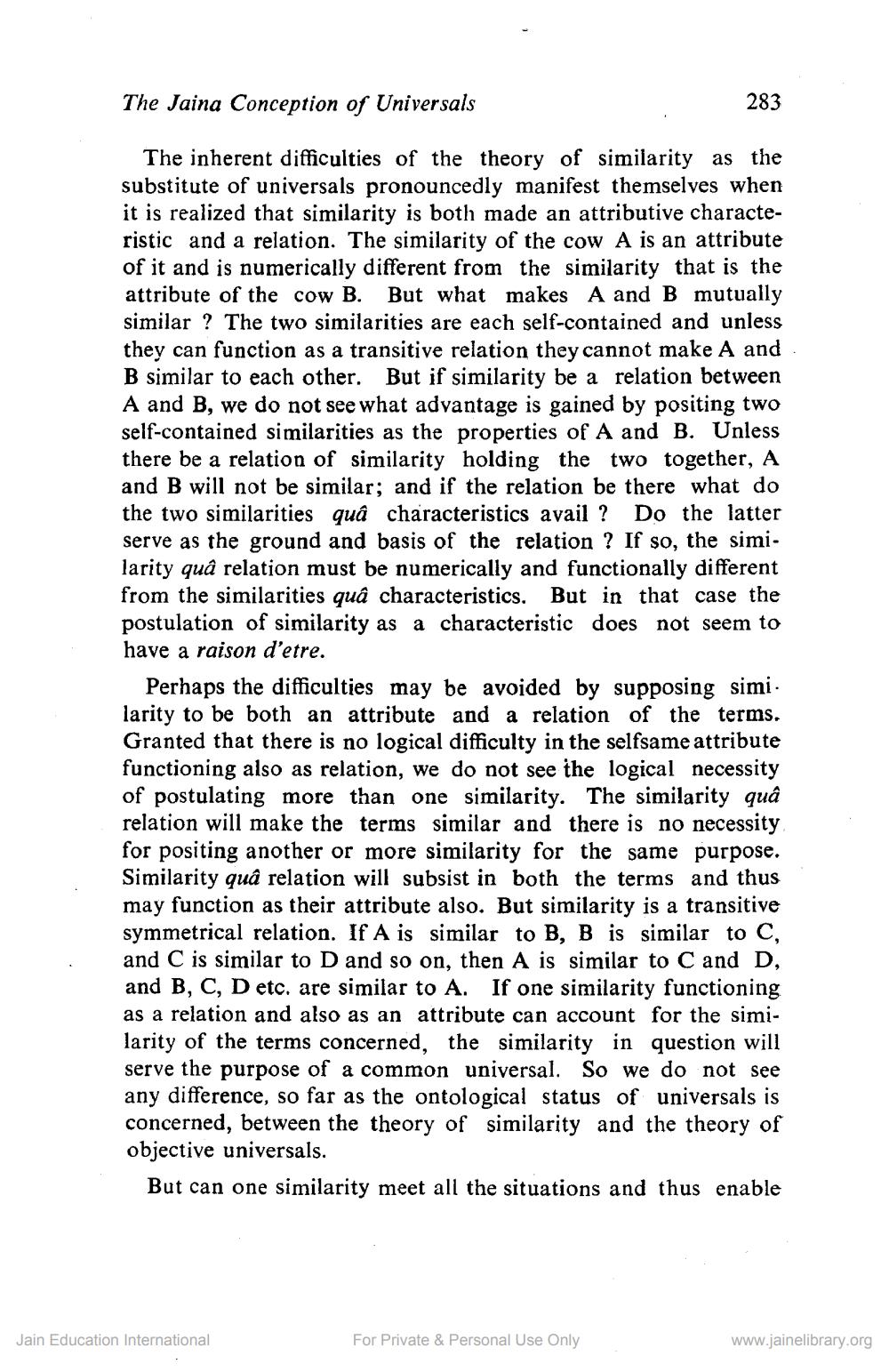________________
The Jaina Conception of Universals
283
The inherent difficulties of the theory of similarity as the substitute of universals pronouncedly manifest themselves when it is realized that similarity is both made an attributive characteristic and a relation. The similarity of the cow A is an attribute of it and is numerically different from the similarity that is the attribute of the cow B. But what makes A and B mutually similar ? The two similarities are each self-contained and unless they can function as a transitive relation they cannot make A and B similar to each other. But if similarity be a relation between A and B, we do not see what advantage is gained by positing two self-contained similarities as the properties of A and B. Unless there be a relation of similarity holding the two together, A and B will not be similar; and if the relation be there what do the two similarities quâ characteristics avail ? Do the latter serve as the ground and basis of the relation ? If so, the similarity quâ relation must be numerically and functionally different from the similarities quâ characteristics. But in that case the postulation of similarity as a characteristic does not seem to have a raison d'etre.
Perhaps the difficulties may be avoided by supposing simi. larity to be both an attribute and a relation of the terms. Granted that there is no logical difficulty in the selfsame attribute functioning also as relation, we do not see the logical necessity of postulating more than one similarity. The similarity quâ relation will make the terms similar and there is no necessity for positing another or more similarity for the same purpose. Similarity quâ relation will subsist in both the terms and thus may function as their attribute also. But similarity is a transitive symmetrical relation. If A is similar to B, B is similar to C, and C is similar to D and so on, then A is similar to C and D, and B, C, D etc. are similar to A. If one similarity functioning as a relation and also as an attribute can account for the similarity of the terms concerned, the similarity in question will serve the purpose of a common universal. So we do not see any difference, so far as the ontological status of universals is concerned, between the theory of similarity and the theory of objective universals.
But can one similarity meet all the situations and thus enable
Jain Education International
For Private & Personal Use Only
www.jainelibrary.org




